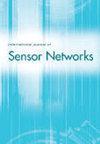Gaussian fitting based human activity recognition using Wi-Fi signals
IF 1.1
4区 计算机科学
Q4 COMPUTER SCIENCE, INFORMATION SYSTEMS
引用次数: 0
Abstract
With the popularity of commercial Wi-Fi devices, channel state information (CSI) based human activity recognition shows great potential and has made great progress. However, previous researchers always tried to remove the noise signals as much as possible without considering the distribution characteristics. Different from the previous methods, we observed the phenomenon that the signal distribution is different when the action exists and does not exist, so we propose GFBR. GFBR takes noise distribution as the entry point, proposes a novel human activity modelling method, and designs a dual-threshold segmentation algorithm based on the modelling method. Then, we extract features from amplitude and linearly corrected phase to describe different activities. Finally, a support vector machine (SVM) is used to recognise five different activities. The average recognition accuracy of GFBR in the three different environments is 94.8%, 96.2%, and 95.7%, respectively, which proves its good robustness.基于高斯拟合的Wi-Fi信号人体活动识别
随着商用Wi-Fi设备的普及,基于信道状态信息(CSI)的人体活动识别显示出巨大的潜力并取得了很大的进展。然而,以往的研究总是试图尽可能地去除噪声信号,而不考虑其分布特征。与以往的方法不同的是,我们观察到当动作存在和不存在时,信号的分布是不同的,因此我们提出了GFBR。GFBR以噪声分布为切入点,提出了一种新的人体活动建模方法,并在此基础上设计了一种双阈值分割算法。然后,我们从振幅和线性校正相位中提取特征来描述不同的活动。最后,使用支持向量机(SVM)识别五种不同的活动。GFBR在三种不同环境下的平均识别准确率分别为94.8%、96.2%和95.7%,证明了其良好的鲁棒性。
本文章由计算机程序翻译,如有差异,请以英文原文为准。
求助全文
约1分钟内获得全文
求助全文
来源期刊

International Journal of Sensor Networks
COMPUTER SCIENCE, INFORMATION SYSTEMS-TELECOMMUNICATIONS
CiteScore
2.40
自引率
27.30%
发文量
86
期刊介绍:
IJSNet proposes and fosters discussion on and dissemination of issues related to research and applications of distributed and wireless/wired sensor and actuator networks. Sensor networks is an interdisciplinary field including many fields such as wireless networks and communications, protocols, distributed algorithms, signal processing, embedded systems, and information management.
Topics covered include:
-Energy efficiency, energy efficient protocols-
Applications-
Location techniques, routing, medium access control-
Coverage, connectivity, longevity, scheduling, synchronisation-
Network resource management, network protocols, lightweight protocols-
Fault tolerance/diagnostics-
Foundations-
Data storage, query processing, system architectures, operating systems-
In-network processing and aggregation-
Learning of models from data-
Mobility-
Performance analysis-
Sensor tasking and control-
Security, privacy, data integrity-
Modelling of systems/physical environments, simulation tools/environments.
 求助内容:
求助内容: 应助结果提醒方式:
应助结果提醒方式:


